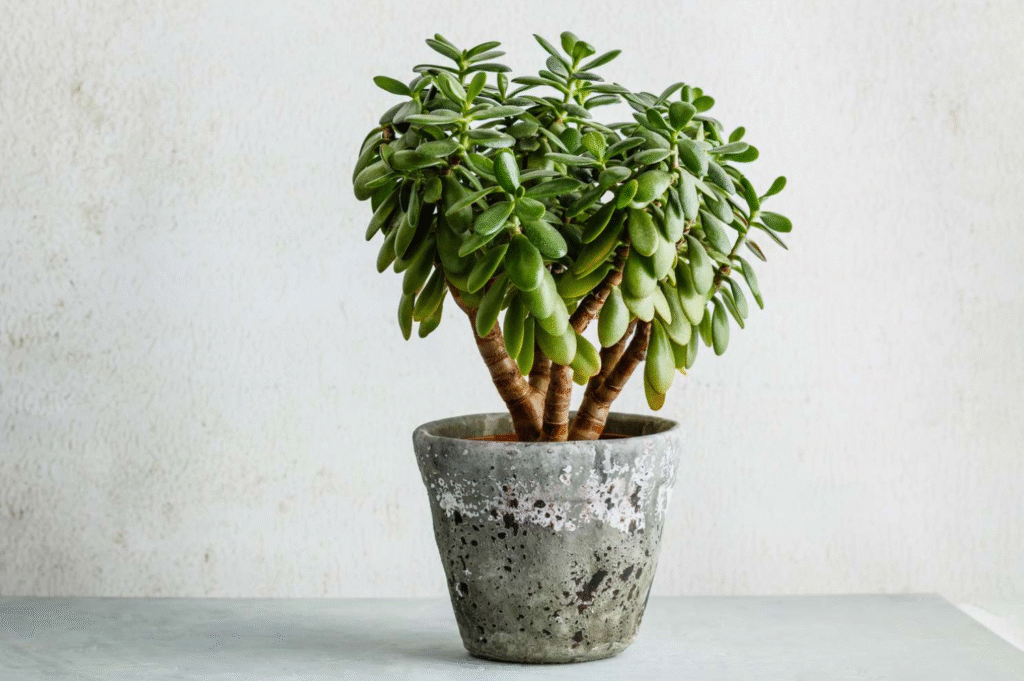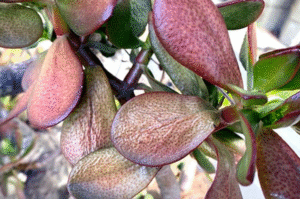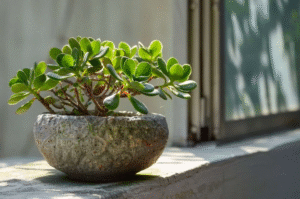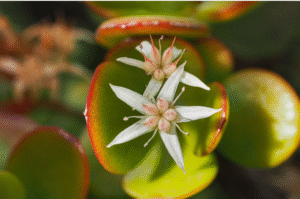The jade plant, also known by its botanical name Crassula ovata, is one of the most popular houseplants found in homes and offices around the world. It’s admired for its thick, glossy leaves, low maintenance, and the belief that it brings good fortune and positive energy.
But what exactly is a jade plant? In this article, we’ll explore everything you need to know, from its appearance and benefits to care tips and how to grow it at home.
Introduction: Meet the Jade Plant
The jade plant is a succulent shrub from the warm, dry regions of South Africa and Mozambique. Thanks to its easy-growing nature and attractive appearance, it has become a favorite among both beginner and experienced plant lovers.
This plant is often called the money plant, lucky plant, or friendship tree, names that reflect its strong association with prosperity, good luck, and long-term growth.
Key Features of a Jade Plant
Jade plants have a unique look that makes them easy to recognize. Here are the main features that set them apart:
- Leaves: Thick, oval-shaped, and glossy green. Some varieties have red edges when exposed to sunlight.
- Stems: As the plant grows older, its green stems become woody and strong, making it look like a miniature tree.
- Size: While it grows slowly, a healthy jade plant can reach up to 3 to 6 feet tall indoors.
- Flowers: In ideal conditions, it can bloom small, star-shaped white or pink flowers, though flowering is rare indoors.
Why Is the Jade Plant So Loved?
Jade plants are more than just good-looking. Here are some of the main reasons they are so popular:
1. Very Low Maintenance
Jade plants are drought-tolerant and can survive with minimal care. This makes them an excellent option for busy people or those new to plant care.
2. Symbol of Wealth and Good Luck
In many cultures, especially in feng shui, jade plants are believed to attract money and success. That’s why they’re often placed near entrances or in business offices.
3. Long Lifespan
With proper care, jade plants can live for decades. Some are passed down from one generation to the next.
4. Good for Indoor Air
Like many succulents, jade plants can help freshen indoor air by releasing oxygen and reducing certain toxins.
How to Identify a Jade Plant
Here’s how you can tell if a plant is a jade plant:
| Feature | Description |
| Leaves | Thick, fleshy, oval, and shiny green |
| Leaf edges | It may turn red with enough sunlight |
| Stem | Green when young, woody as it matures |
| Shape | Upright, bushy, and tree-like |
| Growth style | Slow-growing, often pruned for bonsai |
There are also different types of jade plants, like:
- Hummel’s Sunset – Bright yellow leaves with red tips.
- Gollum Jade – Tube-shaped leaves, like tiny fingers.
- ET’s Fingers – Similar to Gollum, but with curled tips.
How to Care for a Jade Plant
Taking care of a jade plant is simple if you follow a few basic rules. Here’s what it needs to thrive:
1. Light
Jade plants love sunlight. They grow best when they get 4 to 6 hours of direct sunlight every day. A sunny windowsill is the perfect spot.
2. Water
Overwatering is the biggest mistake. Always let the soil dry out completely between waterings. During summer, water every 2–3 weeks; in winter, once a month is enough.
3. Soil
Use a well-draining succulent or cactus soil mix. You can also mix regular potting soil with sand or perlite to improve drainage.
4. Temperature
Keep the plant in temperatures between 65–75°F (18–24°C). Avoid cold drafts and sudden temperature drops.
5. Fertilizer
Feed with a diluted, all-purpose liquid fertilizer once every 3–4 months during the growing season (spring and summer).
Common Problems and Their Fixes
Even though jade plants are tough, they can face issues. Here’s how to spot and fix them:
| Problem | Likely Cause | What to Do |
| Yellowing leaves | Too much water | Water less and let the soil dry |
| Wrinkled leaves | Not enough water | Give a deep soak |
| Stretched-out growth | Not enough sunlight | Move to a brighter area |
| Dropping leaves | Sudden temperature changes | Keep in a stable, warm environment |
How to Propagate a Jade Plant
Want more jade plants? Propagation is simple. You can use a leaf or stem cutting:
- Cut a healthy leaf or stem.
- Let it sit out for 1–2 days to callus over.
- Place it in dry, well-draining soil.
- Mist lightly every few days until roots grow (about 2–4 weeks).
Propagation is a fun and cost-free way to grow your collection or share plants with friends.
Is a Jade Plant Right for You?
If you’re looking for a plant that’s both beautiful and easy to care for, the jade plant is a smart choice. It fits perfectly in a sunny window, on your office desk, or as a centerpiece in your living room.
Its charm, longevity, and symbolic value make it one of the best indoor plants you can own. Whether you’re starting your plant journey or adding to your indoor garden, the jade plant will never disappoint.
Final Thoughts
So, what is a jade plant? It’s more than a pretty succulent. It’s a symbol of growth, success, and positive energy, wrapped up in a low-maintenance plant that fits in almost any space.
With proper care and attention, a jade plant can bring beauty and blessings into your home for many years to come.






